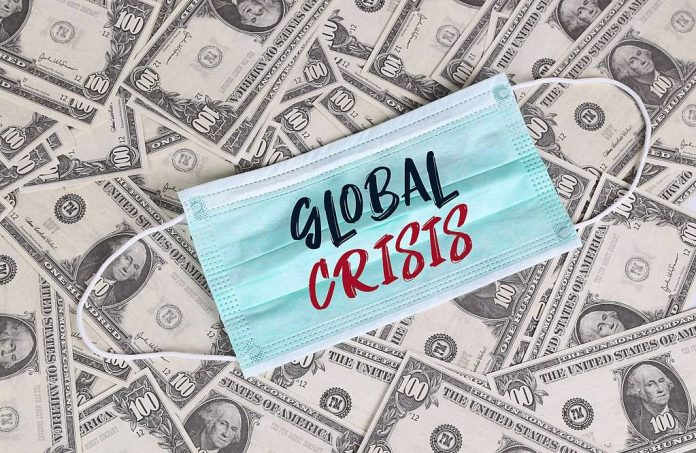The world will never be the same once COVID-19 has run its full course, and in some ways that is not a bad thing. The virus has revealed many of the inequalities that exist within our society today. For example, that the burden of caregiving falls predominantly on women, that the workers we have deemed “essential” are often poorly compensated and come from marginalized communities, and that those who now count themselves as unemployed are likely those who were earning little to begin with. The virus has also shone a light on the fact that access to healthcare, housing, and a minimum income are truly fundamental to building resilience against future shocks.
While COVID-19 is still wreaking havoc on the global economy, many governments are now pivoting, laying plans for the eventual economic recovery. The scale of destruction and the rebuild that will be required often draw parallels to WWII. It was Winston Churchill in the context of post-war recovery, working to create the United Nations, who mused that you should “never let a good crisis go to waste.”
Like WWII, we should not let this crisis go to waste either. The post-COVID-19 global economic rebuild offers us an opportunity for a clean slate, to remedy the inequalities and biases that exist in our institutions today. The post-WWII reconstruction brought us the liberal international order, that while under pressure today, has been a linchpin of global peace and security. The post-COVID-19 rebuild offers a similar opportunity to reprioritize our goals and rebuild anew, changing our current course for the better. If we are to remedy the inequalities that the pandemic has highlighted so acutely, its an opportune moment to ensure that wellbeing – both human and planetary – is central to public policy as we move forward.
It is not that wellbeing has been ignored as a goal of policy, but it is often viewed as a function of growth. If the economy is doing well, surely people and the planet must be doing well also went the thinking. This line of thinking however ignores how growth is distributed across societies and ultimately how this distribution impacts individuals and the environment.
If we are committed to rethinking what economic success looks like by putting the wellbeing of people and the planet at the forefront of policymaking, Oxford economist Kate Raworth has some novel advice in her latest book, “Doughnut Economics”. What is it going to take? The promotion of wellbeing is going to require that economists and policymakers alike start thinking outside of the box, and instead, inside of the doughnut.
The Doughnut
The doughnut is a conceptual framework that plots out the “social and planetary boundaries” our economies must operate within to maximize the wellbeing of people and our environment. The floor, or foundation of the doughnut, highlights the social threshold that we must operate above in order to maintain the wellbeing of people across a number of indicators like health, education, housing, and food security.
The ceiling of the doughnut highlights the ecological boundaries we must operate within to maintain the wellbeing of the planet. Beyond the threshold of the ceiling of the doughnut are indicators like climate change, ocean acidification, and biodiversity loss, each demonstrating we have overshot Earth’s capacity to maintain the current environmental conditions that support life as we know it.
If the key to promoting well being is operating above the social floor and below the ecological ceiling of the doughnut, we need to design policy that keeps people and the planet inside of what Raworth calls this “safe and just” space, the space where both people and the planet successfully thrive.
Rebuilding inside of the doughnut
As Raworth notes, economics is the mother tongue of public policy, so if we are to successfully tackle the grand challenges we face today – including this pandemic – modernizing our thinking in the “dismal science” is an obvious place to start. She offers up a number of suggestions, many of which we would do well to consider as we begin to lay blueprints for the post-COVID-19 world.
First, we know that what gets measured gets done, so if wellbeing is to be a central focus of policymaking it has to be effectively measured. To date, we have relied heavily on proxies like GDP to measure wellbeing. Certainly, the size of an economy tells us some things, like the resources it has at its disposal, but it cannot tell us how those resources are distributed across society, or how that distribution impacts citizens. As Nobel Laureate Simon Kuznets put it, “The welfare of a nation can . . . scarcely be inferred from a measure of national income.”
Recognizing this, in 2008, France established the Stiglitz-Sen-Fitoussi Commission to examine how to measure wealth and social progress, without relying on GDP, a measure that cannot fully capture what people are experiencing. The commission and its resulting recommendations – such as assessing health, education, and social connectedness – have guided the work of countries and international organizations like the OECD in adopting wellbeing frameworks. Ireland for example, takes a cross-government approach to wellbeing and publishes an annual wellbeing report.
If we are to proactively promote wellbeing as a goal of policy, effectively measuring it is the place to start. In the context of the COVID-19-recovery, research shows that pandemics exacerbate inequality – knowing who is most affected, how, and why, will be essential to responding. In late 2019 Canada made a commitment to develop its own wellbeing framework. More countries would do well to follow suit.
For people to thrive, Raworth points out that we also need to build economies that are “distributive by design.” Inequality has negative impacts on many markers of wellbeing, such as democratic and economic stability, and environmental sustainability. Key to promoting wellbeing then is promoting policies that serve to reduce inequality. Raworth suggests that investing in skills and education, delivering a guaranteed income, and more effectively redistributing wealth are three policies (among many others she suggests), that if implemented effectively could each help to minimize inequality and maximize wellbeing.
Investing in skills and education, and in particular those skills that set humans apart from machines, like creativity and empathy – or what some researchers have dubbed socio-emotional skills – will help build resilience against a shifting labour market. We know that many jobs and tasks could eventually be automated, and it is low skilled workers who stand to be impacted most. In the immediate term and in the context of the pandemic, low skilled workers have been the first to exit the labour market, and on a longer time horizon, are the same workers who will face the most pressure from automation. Investing in education, training, and upskilling opportunities will bolster our immediate economic recovery, reduce inequality, and also help ensure we are more prepared to respond to the future impacts of technological change.
Raworth further suggests that implementing a guaranteed basic income will serve to reduce inequality as it is an easy way to ensure that all individuals have access to the financial resources needed to keep themselves above the social floor of the doughnut. She cautions however that guaranteed incomes should not replace public services, but rather complement them.
Right now, governments across the globe are making their first forays into guaranteed incomes, as a response to the pandemic. In Canada for example, individuals who have lost work due to COVID-19 receive $2,000 per month in income replacement. While intended to be short-term, depending on how long the pandemic lasts, these policies could become more permanent – and why not? Income inequality will be exacerbated because of the pandemic and if we are serious about the promotion of wellbeing, perhaps this policy’s day has come.
Lastly, Raworth suggests that remedying inequality and promoting wellbeing could be achieved in part by more effectively redistributing wealth. Most economies focus on redistributing income, but as Thomas Picketty highlighted in “Capital in the 21st Century”, if we really want to get to the heart of inequality, it is wealth inequality that we will have to remedy.
Many of the programs governments have put in place to respond to the pandemic have come with a hefty price tag – Canada’s budget deficit is currently estimated to be $252 billion, it is highest ever recorded and it will no doubt climb even higher. On the other side of the pandemic, as governments consider how to get the books back to balance, a wealth tax could serve dual goals of reducing both inequality and government debt.
COVID-19 is destroying lives and livelihoods across the globe, but as we think about how to recover and rebuild we should recognize that the pandemic has also left us with an unprecedented opportunity – an opportunity to wipe the slate clean, break with dogmas of the past, and rebuild an economy that truly works for all people and the planet. For a map to get us there, Kate Raworth’s “Doughnut Economics” is a great place to start.
The views and opinions expressed in this article are those of the author.

Daniel is the Director of Policy at Polytechnics Canada, where he collaborates with a variety of partners, domestic and international, to create solutions-oriented policy advice on issues related to skills and workforce development.


